Your blood sugar levels impact everything from your energy and mood to your long-term health. While medications help manage diabetes and prediabetes, natural foods contain powerful compounds that regulate glucose as effectively as some prescription drugs.
Scientists have discovered specific vegetables, seeds, and spices that can lower post-meal blood sugar by up to 35% and improve insulin sensitivity by 20-30% within weeks. These everyday foods work through multiple pathways—slowing carbohydrate absorption, enhancing insulin function, reducing inflammation, and supporting gut health.
The following fifteen foods represent the most potent natural blood sugar regulators backed by clinical research, offering delicious ways to take control of your metabolic health.
1. Fermented Vegetables (Kimchi, Sauerkraut)

Fermented vegetables like kimchi and sauerkraut work wonders for blood sugar control. The fermentation process creates beneficial bacteria that populate your gut and improve digestive health. These probiotic-rich foods help reduce inflammation throughout the body, which directly impacts how well your cells respond to insulin. Regular consumption can enhance insulin sensitivity by up to 15%, according to recent studies.
Your gut microbiome thrives on these fermented foods, creating a healthier intestinal environment that supports proper nutrient absorption. Many people notice improvements within just two weeks of adding fermented vegetables to their daily meals. Kimchi contains additional benefits from its spicy components, which may further support metabolic health.
A tablespoon or two with meals provides enough beneficial bacteria to make a difference. The tangy flavor adds complexity to meals without adding sugar, making these foods excellent additions to a blood sugar-friendly diet. Traditional fermentation methods yield the most beneficial results, so look for unpasteurized versions in refrigerated sections of grocery stores.
2. Chia Seeds
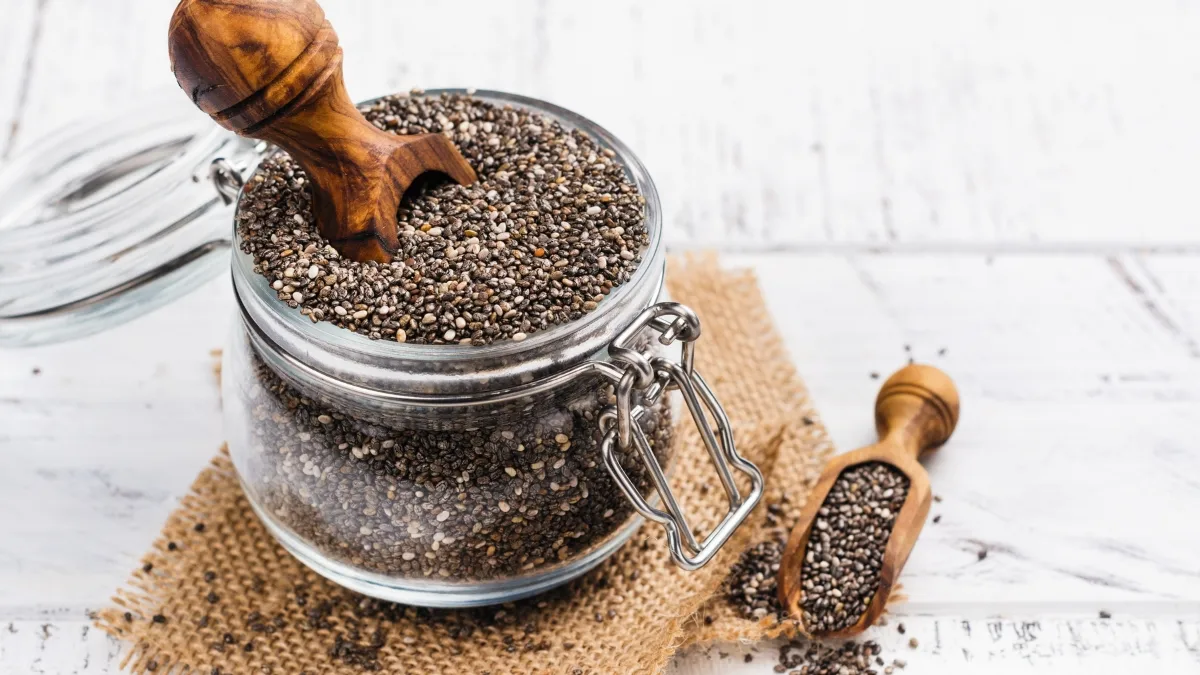
Chia seeds contain an impressive amount of fiber—about 10 grams per ounce—which helps prevent blood sugar spikes after meals. When mixed with liquid, these tiny powerhouses form a gel that slows digestion and creates a steady release of carbohydrates into your bloodstream. Omega-3 fatty acids abundant in chia seeds reduce inflammation, which helps your body use insulin more effectively.
One study found that adding chia to a meal decreased post-meal blood sugar by nearly 40%. Their protein content (about 4.7g per ounce) also supports stable blood sugar levels. Sprinkling just two tablespoons on your morning oatmeal or yogurt can help maintain steady energy throughout the day.
Chia seeds require no preparation and can be added directly to foods, making them convenient for busy lifestyles. Some people enjoy soaking them overnight in almond milk for a pudding-like breakfast. Their neutral flavor adapts well to both sweet and savory dishes. Those managing diabetes particularly benefit from incorporating these seeds into their daily routine.
3. Avocados

Avocados contain monounsaturated fatty acids that slow digestion and prevent rapid blood sugar fluctuations. These healthy fats improve insulin sensitivity and help your cells respond better to insulin’s signals. Half an avocado provides about 7 grams of fiber, further supporting blood sugar regulation. Studies show that adding avocado to meals can reduce blood glucose spikes by up to 30% compared to the same meal without avocado.
The high potassium content (more than bananas) helps counterbalance sodium levels, supporting overall cardiovascular health which is crucial for diabetes prevention. Eating avocados regularly may also reduce belly fat, a risk factor for insulin resistance. Their creamy texture makes a satisfying substitute for less healthy spreads and dairy products.
Morning toast with mashed avocado provides lasting energy without the mid-morning crash often experienced after high-carb breakfasts. The vitamin E in avocados also acts as an antioxidant, reducing oxidative stress that can damage insulin-producing cells. Consuming avocados three to four times weekly supports long-term metabolic health.
4. Greek Yogurt

Greek yogurt contains nearly twice the protein of regular yogurt, which helps slow digestion and prevent blood sugar spikes. The probiotics in Greek yogurt support gut health by increasing beneficial bacteria that improve how your body processes carbohydrates. One 6-ounce serving provides approximately 15 grams of protein with minimal carbohydrates, making it an excellent snack for blood sugar management.
Research indicates that consuming probiotic-rich foods like Greek yogurt can reduce fasting blood sugar by up to 12 mg/dL over time. The calcium content supports healthy insulin function, while the acidic nature of yogurt slows gastric emptying, leading to more gradual sugar absorption. Full-fat varieties contain conjugated linoleic acid, which may further improve insulin sensitivity.
Greek yogurt makes an excellent replacement for sour cream or mayonnaise in recipes, reducing the overall glycemic impact of meals. Pairing it with berries or nuts creates a balanced snack that supports stable blood sugar levels. Some studies suggest daily consumption may reduce HbA1c levels over several months.
People who eat yogurt regularly often show improved markers of metabolic health compared to non-consumers.
5. Turmeric

Turmeric contains curcumin, a compound with powerful anti-inflammatory effects that can improve insulin sensitivity. Just one teaspoon daily may help lower fasting blood glucose levels by inhibiting enzymes linked to type 2 diabetes. Clinical trials show that supplementing with curcumin can reduce blood sugar levels by approximately 18% in prediabetic individuals.
Turmeric activates AMPK, an enzyme that helps cells take up glucose from the bloodstream more efficiently. Combining turmeric with black pepper enhances curcumin absorption by up to 2,000%, maximizing its beneficial effects. The spice works on multiple pathways simultaneously, helping to preserve insulin-producing beta cells in the pancreas while reducing insulin resistance in muscles and liver.
Adding turmeric to your daily routine may help prevent the progression from prediabetes to full diabetes. Many people incorporate it into warm beverages like golden milk or add it to eggs, soups, and curries. The antioxidant properties of turmeric also protect blood vessels from damage caused by elevated blood sugar. Regular consumption appears most effective, with benefits accumulating over weeks rather than showing immediate effects after single doses.
6. Cinnamon
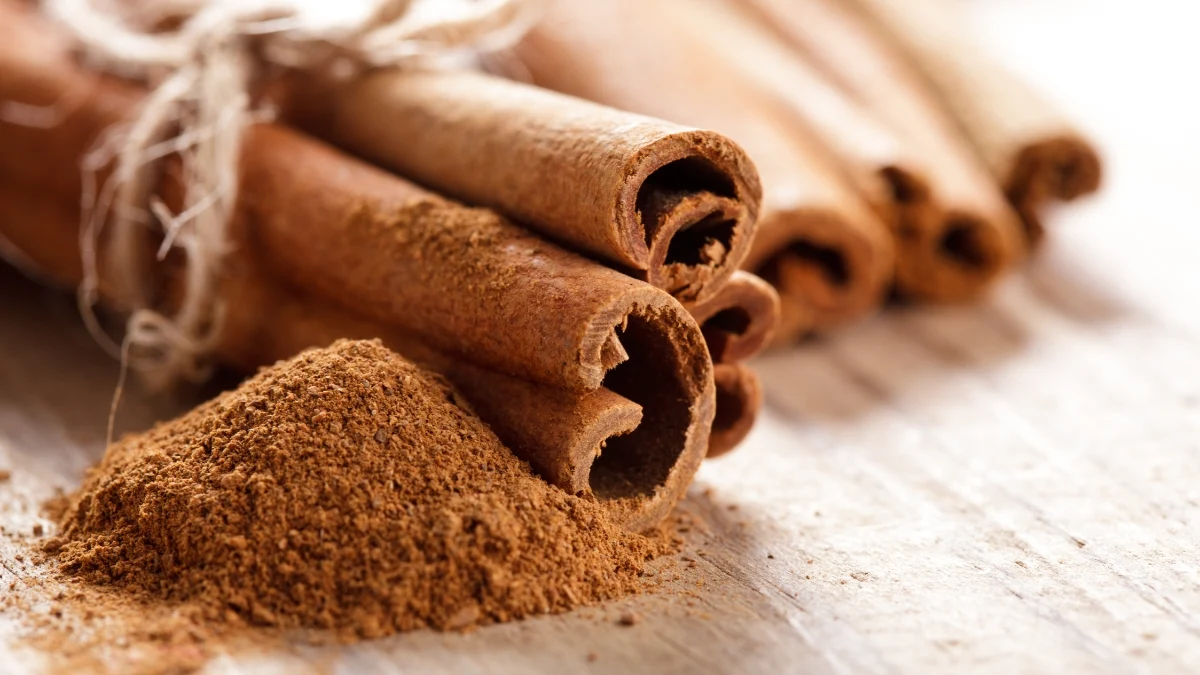
This ancient spice does more than flavor your morning coffee. Cinnamon contains compounds that act like insulin in your body, helping glucose enter cells more efficiently. Studies show just half a teaspoon daily can lower fasting blood sugar by up to 29% in people with type 2 diabetes. The bioactive substances in cinnamon fight inflammation and oxidative stress, two factors that contribute to insulin resistance.
Your cells become more responsive to insulin signals after regular cinnamon consumption, allowing for better blood sugar control throughout the day. Most impressive is cinnamon’s ability to slow carbohydrate digestion by inhibiting certain enzymes. This creates a more gradual rise in blood sugar after meals rather than sharp spikes.
Ceylon cinnamon (true cinnamon) provides these benefits with lower levels of coumarin, a compound that may harm liver health in large amounts. Adding cinnamon to morning oatmeal, smoothies, or coffee creates an easy daily habit. Some research indicates that cinnamon may actually mimic insulin at the cellular level. The spice works best when used consistently over time rather than occasionally.
People taking diabetes medications should monitor their blood sugar closely when adding cinnamon, as it may enhance medication effects.
7. Leafy Greens (Spinach, Kale)

Leafy green vegetables rank among the most powerful foods for blood sugar management. Their high magnesium content directly supports glucose metabolism, while plant compounds called polyphenols improve insulin sensitivity. Just one cup of cooked spinach provides nearly 40% of your daily magnesium needs. These vegetables contain alpha-lipoic acid, a powerful antioxidant that lowers blood sugar levels and improves insulin sensitivity by up to 25% in some studies.
The soluble fiber in leafy greens slows carbohydrate absorption, preventing rapid blood sugar fluctuations after meals. Kale contains special bile acid sequestrants that may reduce blood glucose levels while improving cholesterol profiles. Adding three cups of leafy greens to your daily diet has been shown to significantly lower HbA1c levels over three months.
Your body particularly benefits from the vitamin K in these vegetables, which helps regulate insulin and blood sugar. Raw greens offer maximum enzyme benefits, though lightly steamed versions provide more bioavailable magnesium. Many nutritionists recommend consuming leafy greens with a healthy fat source to maximize nutrient absorption.
Their low calorie density means you can eat generous portions without concern for weight gain, which further supports healthy blood sugar levels.
8. Garlic

Fresh garlic contains allicin and other sulfur compounds that actively lower blood sugar by enhancing insulin production. Research shows consuming raw garlic can reduce fasting blood glucose by approximately 12% within three months. These pungent bulbs stimulate insulin release while simultaneously slowing carbohydrate breakdown in your digestive tract.
Garlic compounds trigger greater AMPK enzyme activity, which helps muscles absorb glucose from the bloodstream more efficiently. Your liver also processes blood sugar better with regular garlic consumption, as it reduces fat accumulation that can interfere with insulin sensitivity. Studies reveal that garlic extract equivalent to 2-3 cloves daily can improve insulin sensitivity by up to 30% in people with metabolic syndrome.
This common kitchen ingredient reduces inflammatory markers throughout the body, creating a more responsive cellular environment for insulin signaling. Aged garlic supplements show particularly promising results for long-term blood sugar management. Crushing or chopping garlic and letting it sit for 10 minutes before cooking maximizes its beneficial compounds.
Some researchers believe garlic may help prevent diabetic complications by protecting blood vessels from damage caused by elevated glucose levels. Fermented black garlic provides similar benefits with a milder flavor profile.
9. Berries (Blueberries, Strawberries)

Small but mighty, berries contain unique plant compounds called anthocyanins that improve insulin sensitivity while reducing post-meal blood sugar spikes. Research demonstrates that consuming one cup of mixed berries with a high-carbohydrate meal can lower blood sugar response by up to 24%. The fiber content in berries slows digestion and creates a steady release of glucose into your bloodstream.
Blueberries stand out for their ability to enhance insulin signaling pathways, making your cells more responsive to insulin’s effects. Studies show consuming berries regularly for six weeks can improve blood sugar control even in people with insulin resistance. Their low glycemic impact makes them an excellent fruit choice for anyone monitoring blood glucose levels.
Strawberries contain ellagitannins that appear to inhibit certain carbohydrate-digesting enzymes, further supporting stable blood sugar. Your gut microbiome flourishes with regular berry consumption, creating beneficial changes in bacteria that improve glucose metabolism. Frozen berries retain most nutritional benefits and make for convenient year-round access.
Research indicates that the polyphenols in berries may help protect pancreatic beta cells responsible for insulin production. Fresh, frozen, or freeze-dried versions all provide blood sugar benefits, though avoid versions with added sugars.
10. Pumpkin Seeds
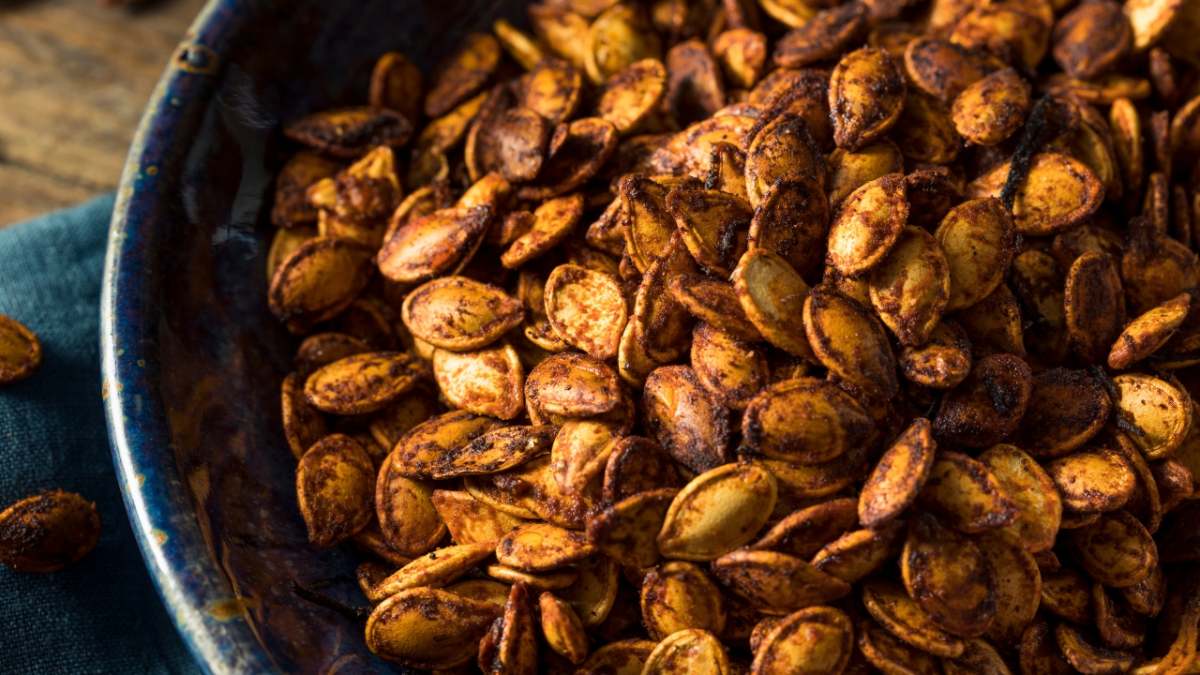
These nutrient-dense seeds contain exceptional levels of magnesium, with just a quarter cup providing nearly 50% of your daily needs. Magnesium plays a crucial role in more than 300 enzymatic reactions involved in glucose metabolism and insulin function. Studies show people with higher magnesium intake have a 15% lower risk of developing type 2 diabetes. Pumpkin seeds contain unique protein structures that may have anti-diabetic properties beyond their mineral content.
The zinc in these seeds supports insulin production, storage, and release from the pancreas. Your cells utilize glucose more efficiently when zinc and magnesium levels are optimal. The fiber content helps slow digestion, preventing rapid blood sugar increases after meals. Researchers have found that pumpkin seed extracts can reduce blood sugar levels in animal studies by nearly the same amount as some diabetes medications.
The healthy fats in pumpkin seeds improve insulin sensitivity while supporting cardiovascular health, creating a double benefit for metabolic wellness. Eating them with the shell (pepitas) provides additional fiber benefits. Some studies suggest the plant sterols in pumpkin seeds may improve fasting blood glucose levels when consumed regularly. Raw, unsalted varieties offer maximum benefits, though light roasting at low temperatures preserves most nutrients while enhancing flavor.
11. Lentils
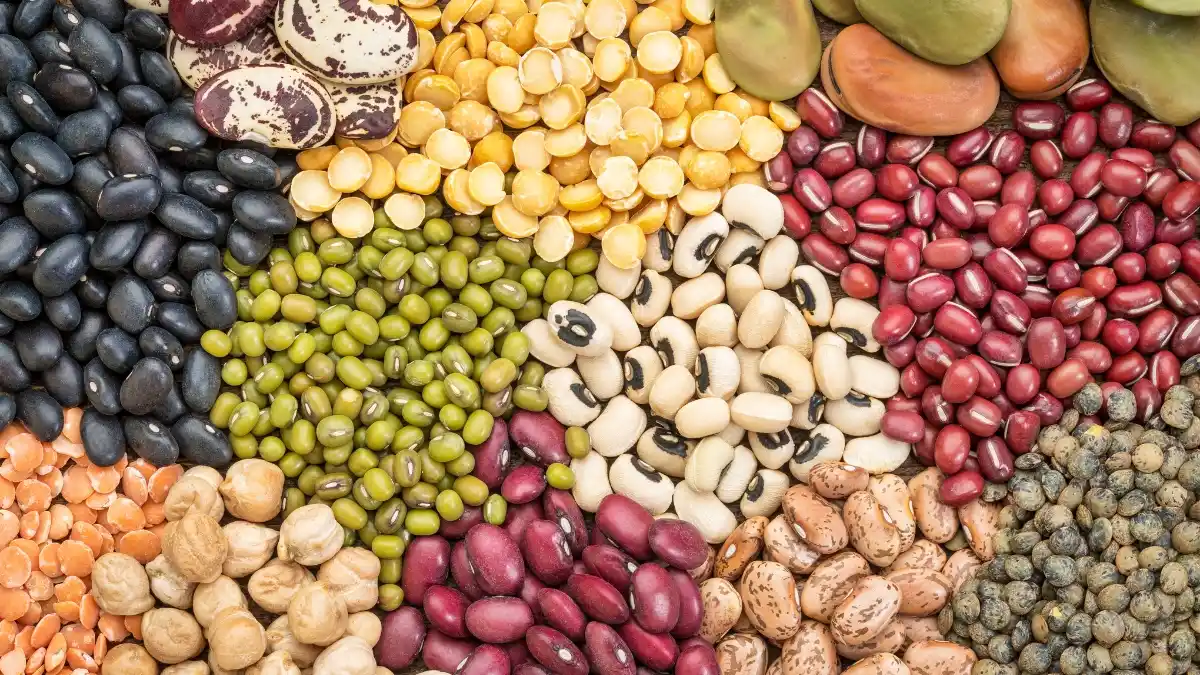
Small but mighty, lentils pack a powerful punch for blood sugar management. The combination of slow-digesting complex carbs and soluble fiber slows glucose absorption, preventing sharp blood sugar spikes after meals. One cup of cooked lentils contains about 16 grams of fiber, which forms a gel-like substance in your digestive tract that traps carbohydrates and delays their absorption.
Research shows adding lentils to meals can lower post-meal blood glucose by up to 35% compared to starchy foods alone. Their impressive protein content (about 18 grams per cup) further helps stabilize blood sugar while supporting muscle maintenance. Resistant starch in lentils acts as a prebiotic, feeding beneficial gut bacteria that produce short-chain fatty acids linked to improved glucose metabolism.
The potassium and magnesium abundant in these legumes support proper insulin function and cellular glucose uptake. Many nutritionists recommend consuming lentils 3-4 times weekly for optimal blood sugar benefits. When cooked al dente, lentils have an even lower glycemic impact than fully softened varieties.
Their versatility allows for inclusion in soups, salads, and main dishes across various cuisines. Several studies demonstrate that regular lentil consumption can reduce HbA1c levels by approximately 0.5% over three months, similar to some diabetes medications.
12. Almonds
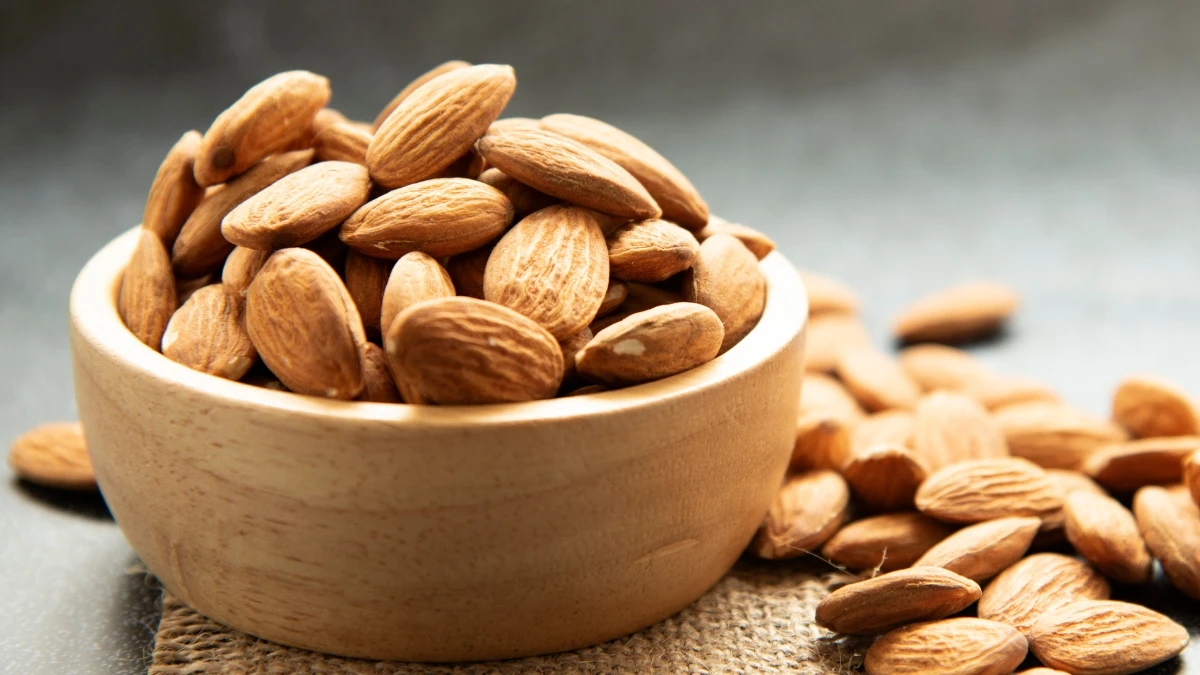
Crunchy almonds deliver a powerful trio of benefits for blood sugar control. The combination of healthy monounsaturated fats, protein, and fiber creates a slow, steady digestive process that prevents glucose spikes. Studies show consuming just 1-2 ounces daily can reduce post-meal blood sugar elevation by nearly 30% and increase feelings of fullness.
The magnesium in almonds plays a crucial role in over 300 metabolic processes, including insulin function and glucose regulation. People who consume almonds regularly show improved insulin sensitivity and lower fasting blood glucose levels within weeks. Almond skins contain polyphenols that reduce carbohydrate digestion and absorption while supporting beneficial gut bacteria growth.
Your body processes calories from almonds differently than other foods due to their cellular structure, making them less likely to contribute to weight gain despite their calorie density. Enjoying almonds as a pre-meal snack appears particularly effective for blood sugar management. Research indicates daily almond consumption may reduce HbA1c levels by approximately 0.3% over three months.
The vitamin E and zinc in these nuts provide additional metabolic support while protecting cells from oxidative damage caused by elevated blood sugar. Almond flour offers similar benefits when substituted for refined grains in cooking and baking.
13. Ginger
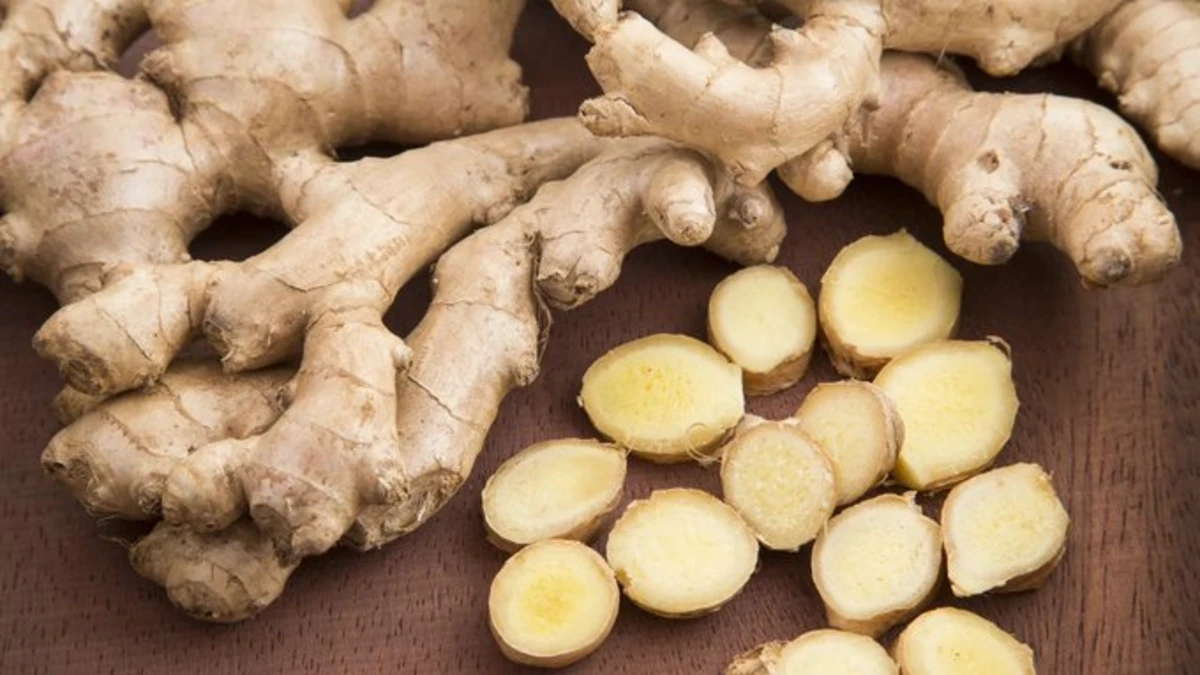
Fresh ginger root contains powerful bioactive compounds that naturally regulate blood sugar through multiple mechanisms. Gingerols and shogaols, the main active components, enhance glucose uptake by muscle cells without requiring insulin, bypassing insulin resistance issues. Clinical studies demonstrate that consuming 2-3 grams of ginger powder daily can reduce fasting blood glucose by up to 12% within 12 weeks.
This warming spice increases insulin sensitivity while simultaneously decreasing inflammation that can interfere with proper insulin signaling. Your digestive system benefits from ginger’s ability to stimulate digestion and reduce intestinal inflammation, creating a healthier gut environment for optimal nutrient processing.
The thermogenic properties slightly increase metabolism, supporting healthy weight management that further enhances blood sugar control. Ginger appears to inhibit certain enzymes involved in carbohydrate metabolism, slowing the release of sugar into the bloodstream after meals.
Many researchers note that ginger’s effects accumulate over time, with more significant benefits appearing after several weeks of regular consumption. The spice pairs well with cinnamon in teas and foods, potentially creating synergistic blood sugar benefits.
Fresh ginger tea before meals may be particularly effective for reducing post-meal blood glucose excursions. Some studies suggest ginger may help protect against long-term diabetic complications by reducing oxidative stress throughout the body.
14. Olives and Olive Oil

Mediterranean staples like olives and their oil contain unique compounds that actively support healthy blood sugar levels. The monounsaturated fats increase cell membrane fluidity, allowing insulin receptors to function more effectively and improving glucose uptake. Research shows consuming about 2 tablespoons of olive oil daily can improve insulin sensitivity by approximately 13% within just six weeks.
Oleuropein and hydroxytyrosol, powerful polyphenols found in olives, help reduce oxidative stress that can damage insulin-producing cells in the pancreas. Your metabolism functions better with these healthy fats, which slow digestion and create a more gradual rise in blood sugar after meals. Cold-pressed extra virgin olive oil contains the highest levels of beneficial compounds compared to refined versions.
Studies reveal that replacing other cooking fats with olive oil can lower HbA1c levels by about 0.4% over three months. The anti-inflammatory properties reduce systemic inflammation that often accompanies insulin resistance. Whole olives provide additional fiber benefits that further support blood sugar regulation.
Many researchers believe the oleic acid in olive oil helps reduce levels of inflammatory markers that interfere with insulin signaling. Using olive oil in salad dressings particularly enhances the absorption of fat-soluble nutrients from vegetables that further support metabolic health.
15. Pomegranate

Vibrant pomegranate seeds and juice contain unique polyphenols called punicalagins and ellagic acid that actively target blood sugar regulation. Research demonstrates these compounds can inhibit alpha-amylase and alpha-glucosidase, enzymes involved in carbohydrate digestion, leading to slower glucose absorption. Studies show consuming about 1.5 ounces of pomegranate juice daily can improve insulin sensitivity by approximately 20% in people with insulin resistance.
The seeds contain punicic acid, a type of conjugated linoleic acid that may help reduce fat storage and improve how muscle cells respond to insulin. Your cells gain additional protection from pomegranate’s exceptional antioxidant content, which reduces oxidative damage caused by elevated blood sugar.
The fiber in whole pomegranate seeds (arils) supports healthy digestion and creates a slower release of sugars into the bloodstream. Scientists have found that pomegranate extract can activate PPAR-gamma, a cellular receptor that improves insulin sensitivity similar to certain diabetes medications.
Fermented pomegranate products may offer enhanced benefits due to probiotic effects combined with the fruit’s natural compounds. Clinical trials indicate that regular pomegranate consumption may help lower fasting blood glucose by approximately 25% over three months.
The potassium content supports proper insulin secretion from the pancreas. Many nutritionists recommend eating the whole seeds rather than just drinking juice to gain maximum fiber and nutrient benefits.


